- Site search

Air travel and short-nosed dogs FAQ
In July 2010, the U.S. Department of Transportation released statistics that showed short-nosed breeds of dogs—such as pugs, Boston Terriers, boxers, some mastiffs, Pekingese, Lhasa Apsos, Shih tzus and bulldogs—are more likely to die on airplanes than dogs with normal-length muzzles. In fact, over the last 5 years, approximately one-half of the 122 dog deaths associated with airline flights involved these short-faced breeds. 25 of the 122 dogs that died over the 5-year period were English bulldogs, followed by 11 pugs, the only other breed in double digits. Although these numbers seem a bit scary, keep in mind that this is a very small number when compared to the hundreds of thousands of animals that fly every year.
Q: Why are these dog breeds more prone to respiratory problems?
A: Veterinarians have long known that short-nosed – the technical term is brachycephalic – dog breeds are more prone to respiratory problems under normal circumstances, and not just during air travel. You see, brachycephalic breeds are prone to respiratory problems because, although they have shortened noses, they still have to pack all of the same anatomical structures in there that dogs with longer snouts do. Just because their snouts are shorter doesn't mean they're missing any parts – they still have to pack nasal passages, sinuses, and a hard palate into that small area. It's sort of like moving from a house to an apartment and having to put the same amount of furniture in the apartment – it's all there, but it can be a bit cramped. The situation is worsened if the dog is overweight or obese.
Q: What kinds of respiratory problems can these dog breeds have?
A: As a result of the tighter space, they are prone to problems such as smaller-than-normal nostrils, a longer-than-normal soft palate, and a narrowed trachea (or windpipe). Because of these abnormalities, they don't breathe as efficiently as dogs with normal-length snouts and can have difficulty cooling off when they're playing or exercising, or if they're stressed or overheated. And when they're stressed, their airway can actually collapse (either partially or completely) and cut off their airflow. It's like breathing through a straw – if you gently suck through the straw, there's no problem getting air. But when you really try to suck hard through the straw, similar to what these dogs may do when they're stressed, exercising or overheating, the straw collapses and you don't get air. This doesn't always cause death, but it can cut off their oxygen supply temporarily and cause the dogs to collapse or overheat.
Q: How do these problems put these dog breeds at higher risk during flights?
A: Because of their anatomical abnormalities, short-nosed breeds seem to be more vulnerable to changes in air quality and temperature in the cargo hold of a plane. Although pets are transported in pressurized cargo holds and get much the same air that the passengers in the cabin do, the air circulation might not be ideal for your pet's individual needs (and remember, your dog is in a crate that could also be affecting ventilation). In addition, remember that there isn't anyone in that hold area that can monitor your pet and provide help if needed – so if there's a problem, you won't know until the plane has landed and your pet has been unloaded.
Q: So, what's a pet owner to do? Should I never fly with a short-nosed pet?
A: We're not saying you should completely avoid air travel with your pet, even with a short-nosed pet. Knowing there are risks is half the battle, and with proper precautions, you can minimize the risks. If you know you're going to be traveling with your pet on an airplane, it really helps to prepare ahead of time.
Q: What can I do to reduce the risks of airline travel for my short-nosed pet?
A: There are many things you can do, including:
- Keep your pet healthy and at a normal weight. Pets with underlying medical conditions may be more likely to have problems during transport. Elderly and obese pets may also be at higher risk.
- Getting your pet used to its traveling crate can really reduce stress while traveling. Think about it...when you're on a plane, you understand what's going on while taking off and landing or even when there's turbulence, but your pet doesn't know what's happening, and this can be stressful – and this can add to the stress your pet may already have if it's in a travel carrier for the first time. If your pet is used to the travel crate, it's more likely to be comfortable in the crate and travel with less stress. And remember, ALL travel crates, regardless of the breed of dog being transported, need to be secure so your pet can't escape.
- Although it can be comforting to your pet to have a familiar-smelling item in its travel crate, avoid thick blankets, fluffy towels or cloth items that your pet can wrap itself or bury its nose in – this could increase the risk of respiratory problems. A very thin blanket or flat newspaper is best for lining the crate.
- The airline may charge an additional fee for pets in the cabin, and many airlines place limits on the number of pets allowed in the cabin.
- In addition, airlines may have specific restrictions on the size of carriers allowed in the cabin as well as in the hold.
- Some airlines may not allow certain breeds of dogs to be transported in the cargo holds of their planes, and airlines such as Continental Airlines also have embargo policies based on the size of the aircraft and the environmental conditions. For example, an airline may refuse to allow short-nosed dogs to be transported in the hold during certain times of the year (due to environmental temperatures) or on certain flights (based on the size of the plane). Most of the embargos apply to animals transported in the hold, and do not apply to pets in the cabin.
- Try to minimize layovers where your pet might be kept in the cargo hold or sitting on the tarmac in temperatures that aren't comfortable for it. For example, in warmer months, or when you're traveling to a warm destination, only fly earlier or later in the day to avoid the mid-day high temperatures so the cargo area doesn't get uncomfortably hot. During cold weather, or when flying to a colder destination, try to fly during the warmer parts of the day.
- Visit your veterinarian within 10 days before any interstate trip you take with your pet, but particularly before airplane trips. Pet owners are required by law to get a certificate of veterinary inspection (often called a health certificate) from their veterinarian for any trip that crosses state lines, and the airlines often require a copy of the health certificate before they'll let your pet fly. If you have a short-nosed breed of dog, ask your veterinarian about your pet's respiratory health and what precautions you can take to minimize the risks for your pet.
- Your veterinarian can help you figure our what kind and size travel carrier you should get and how best to mark it with your personal information to make sure you and your pet are reunited after the flight, what kind of animal identification is appropriate (such as tags, microchip, etc.), and when you should feed your pet during travel.
- We strongly recommend that you avoid tranquilizing your pet for air travel, because it can increase your pet's risk of injury and health problems.
Q: What about short-nosed cat breeds? Are they also at risk?
A: Because they tend to be smaller, most cats travel in carriers in the passenger cabin with their owners, so there are less reported deaths in cats. However, there are short-faced cat breeds, and they may also be prone to more respiratory problems than cats with normal-length faces – so be cautious if your short-faced cat needs to travel in the cargo hold.
As always, talk to your veterinarian if you have ANY concerns about your pet's health.
Related resources
Frequently Asked Questions about Traveling with Your Pet Traveling with Your Pet (brochure) "Short-Faced" Dogs More Prone to Death in Flight, According to DOT Data (U.S. Department of Transportation)

Airlines That Allow Snub-Nosed Dogs in 2024: A Complete Guide to Flying With Pugs and Bulldogs
Airlines that fly with snub-nosed dogs in 2021.
If you have a beloved pug, bulldog or French bulldog that you want to bring along on your next flight, you’ve probably wondered which airlines will accommodate your short-snouted pooch. With so many carriers revising their pet policies, it can be tricky to know for sure. In this in-depth guide, I’ll explore the airline rules for snub-nosed dogs and share my experiences traveling with pugs over the years.
Understanding the Health Risks for Brachycephalic Breeds
Snub-nosed or “brachycephalic” dog breeds like pugs, bulldogs and French bulldogs are more prone to health issues because of their flattened faces. The anatomical structure of their nose and throat makes it harder for them to breathe and regulate their body temperature. Changes in air pressure and temperature during flights can potentially exacerbate these problems. Most airlines have therefore placed restrictions on traveling with dogs that have very short muzzles.
From my experience owning pugs, I’ve found they tend to overheat more easily than other breeds. On hot days, I always carry water for them. I’ve also faced situations where air travel seemed to increase my pugs’ difficulty breathing for a few days after landing. So the airline cautions are basically lookin’ out for our snub-nosed pooches’ wellbeing, you know?
Major US Airline Rules
- American Airlines: Allows snub-nosed dogs to fly as cargo only in the belly of the plane. No brachycephalic dogs are permitted in the cabin .
- Delta Air Lines: Allows snub-nosed dogs to travel as cargo on a case-by-case basis, subject to veterinary approval. Delta may deny travel for any dog they deem unable to withstand the stresses of air travel without suffering adverse health effects.
- United Airlines: Does not accept any pets in the passenger cabin that are considered “brachycephalic” (pugs, bulldogs, etc.). Snub-nosed dogs can travel as cargo if they are at least 4 months old and are evaluated by their own veterinarian prior to travel.
- Southwest Airlines: Allows service dogs and emotional support animals to travel in the cabin, regardless of breed. Snub-nosed dogs traveling as pets must be at least 4 months old, fit in a carrier under the seat, and have documentation that they can travel safely.
So in summary, most major US airlines will allow brachycephalic dogs to fly as cargo, but won’t let them in the passenger cabin for safety reasons. You’d need to contact the carrier directly to get full details on documentation and payment requirements for transporting a snub-nosed pet as baggage.

Pet-Friendly International Airlines
If an international flight is on your radar, here are a few foreign carriers known for being relatively flexible about traveling with companion pets:
- KLM Royal Dutch Airlines: Allows snub-nosed dogs in the cabin on long-haul flights as long as they can breathe comfortably at high altitudes, per a veterinary certificate.
- Lufthansa: Assesses brachycephalic dogs individually based on vet health documents. Some short-snouted breeds may qualify to fly in-cabin after an evaluation.
- Austrian Airlines: Permits snub-nosed dogs to travel in the cabin as long as they can be handled by their owner without stress. A veterinary exam is required.
- Emirates: Reviews snub-nosed dogs on a case-by-case basis for in-cabin travel with documentation of suitability to fly.
Again, check directly with the carrier and book well in advance for peace of mind. International rules are sometimes looser, offering more options, but verification is always safest when trekking cross-country with a pet.
Alternative Travel Arrangements
If an airline outright won’t transport your pug, bulldog or French bulldog, don’t despair. You’ve still got a few other choices to consider:
- Hire a professional pet transport service like Pet Relocation to drive your pup across state lines or fly privately as air freight. This cuts out the airline variable but comes at a higher cost.
- Road trip it with your pooch! Plans may take longer, but riding together can be an adventure your dog will love, too. Just prepare for rest stops, motels that allow pets, and shorter driving days.
- Board your brachycephalic baby at a vet’s office, pet resort or with a house-sitter near your travel destination until you return. This ensures their comfort and care while you’re away.
- Postpone the trip until you can find an airline or ground transport option that’s 1000% certain to get Fido there safe. His well-being comes first!
Personal Experience Flying with Pugs
In 2019, I had to fly cross-country with my two pugs, Penny and Pierre. At the time, American Airlines had recently changed their policy to ban all brachycephalic dogs from cabins . Basically, I was like “No way am I putting my babies in cargo!” So I calls Southwest, and praise be – they were still allowing snub-noses on a case-by-case basis.

I got vet certificates saying Penny and Pierre were fit to fly, packed their favourite toys and squeaky snacks, and off we went! The flight attendants on Southwest were totally sweet to my puggies. We cruised at a comfy altitude, took potty breaks, and the pups slept most of the way. They were a bit sleepy for a couple days after landing but otherwise fine. So sometimes even if the rules seem harsh, you might get lucky with a flexible airline.
In conclusion, air travel safety for brachycephalic dogs requires some research on your part as a pet parent. But with documentation and care, many carriers can accommodate short-snouted companions. With alternatives like driving or shipping options also available, you’ve got choices. The right approach just depends on your particular situation. With prep time, positive outcomes are definitely possible!
I hope this detailed overview helped provide answers about which airlines may fly your snub-nosed dog in 2021. Please let me know if you have any other questions! Safe travels to you and your precious pupper.
Airlines That Allow Snub-Nosed Dogs in 2021
Which airlines allow snub-nosed dogs as emotional support animals in 2021?
Do all airlines have the same rules for snub-nosed dogs, what kind of documentation is required, are there any health restrictions.
Due to respiratory issues that can impact smushed-face dogs, there are sometimes restrictions during hot weather. Perhaps airlines are more cautious in summer. Also, very young, elderly or ill puppers might be denied for safety. So be prepared that your snausage doggo could be turned away if the weather’s too warm or pooch isn’t in tip-top condition. You never know for sure until you try!
How can flights be stressful for brachycephalic dogs?
What can be done to help a snub-nosed dog feel more at ease on a flight, but is flying really worth putting a snub-nosed dog through that kind of stress.

16 Airlines That Allow Snub-Nosed Dogs [2022 Guide]
Snub-Nose Dogs or Brachycephalic Dogs are an extremely popular breed due to their distinctive appearance. They are cute, playful, human-like and build a great bond with their owners. However, the struggle of having a snub-nose dog comes when you are planning to take a flight with them.
Taking snub dogs in airplanes is a real big deal. This breed has a shorter nose than the regular snout. And this condition of them classifies as Brachycephalic. Snug dogs with the brachycephalic condition often suffer from neurological issues (due to generally compressed skull shape) and respiratory problems (due to a shorter nose). While the former condition is less specific, the latter can make it difficult for these dogs to fly.
Can you fly with brachycephalic dogs?
Well, You can Fly with snub-nosed dogs provided with some guidelines, SnubNose Dogs or Brachycephalic dogs are highly prone to respiratory conditions. They don’t breathe as generally as other dogs and us humans. This condition makes it difficult for them to take a flight, especially the long-distance ones.
Snub nose dogs, though, can fly but the process might get really challenging for them. Because of their small nose and breathing abnormalities, they become vulnerable to the change of air quality, pressure, and flow inside the airplane. The process becomes more complicated during extreme weather conditions (too hot or too cold).
That is why a number of airlines worldwide have banned flying with a snub nose dog. The primary concern of airline officials is that if a dog gets physically unfit during the flight, arranging critical care might get tricky. This can lead to significant health issues in the dog and sometimes even death.
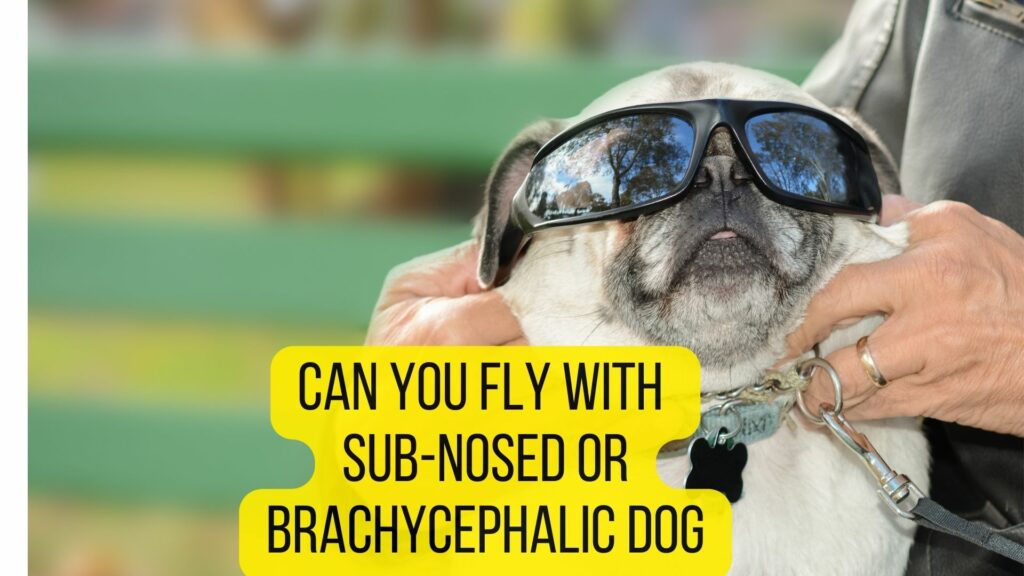
Why don’t airlines allow Snub-nosed dogs?
Snub nose dogs are more sensitive to the temperature in the hold of the plane and changes in air quality which makes airlines ban flights for them. Some airlines do allow snub nose dogs in the cabin as carry-ons. However, if your dog is big enough to go as a carry-on, normally, cargo won’t take them. Since the air pressure and environment in cargos isn’t favorable, your snub nose dog might find high difficulties surviving there.
Snub nose dogs or Brachycephalic dogs hold the highest recorded pet death ratio during flights. And this situation is when death by flying isn’t typical or obvious amongst pets.
Which airlines allow snub-nosed dogs in cabins?
What airlines allow brachycephalic dogs? Not all snub nose dogs experience difficulties while flying; thus, several airlines regulate them on the flight. The risk is totally on the passenger/ dog owner in case of any mishappening. However, if your snub dog is already experiencing any respiratory issues or health issues, avoid flying with them.
16 Airlines that Allow Snub Nose Dogs and Cats in Cabin
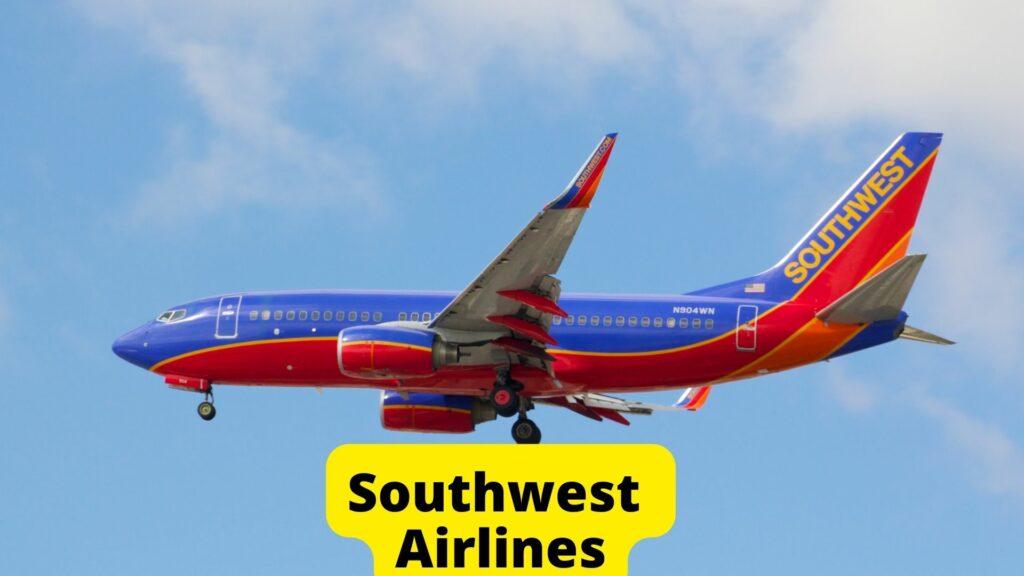
Southwest Airlines (In Cabin)
Southwest Airlines allow snub nose dogs on domestic flights and in-cabins only. However, it doesn’t allow pets, especially the ones with snub noses, on international flights. Even if an itinerary includes an international flight, Southwest won’t allow dogs in it. The travel cost is USD 95 each way. Whereas the Weight limitations (Including crate) are 20 lbs maximum, and the Crate Size limitations are 43.18 X 24.13 X 25.4.
JSX Airlines (In Cabin)
JSX Airlines is an independent carrier in the United States. It operates flights within and between California, Florida, Nevada, Texas, New York, and Arizona. JSX Airlines allow snub dogs in-cabin. The travel cost is Free as long as the pet is inside a carrier/ crate. At the same time, the weight limitation (Including crate) is 65 lbs maximum, and the crate Size limitations: 33.02 x 27.94 x 43.18.
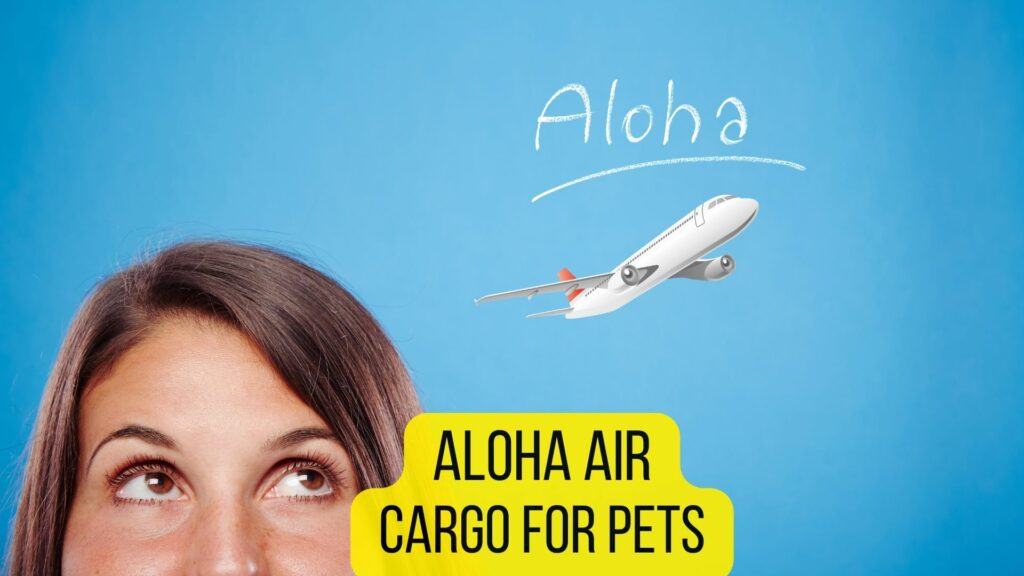
Aloha Air Cargo (On Cargo)
Aloha Air Cargo is an American air cargo that operates a Boeing 767 and Boeing 737 freight aircraft. It doesn’t operate for the passenger but ships your live animals between the Hawaiian Islands, Mainland U.S., a few Caribbean islands, and Puerto Rico. It also sends snub dogs/ cats with no weight restriction. However, the pet must fit inside the crate/ carrier.
Aloha Air Cargo states pets as their VIP guests and takes utmost care of them. However, it doesn’t accept certain snub nose dogs and dogs that require a stable handler onboard. Booking for pet shipping with Aloha must be done 48 hours before tender.
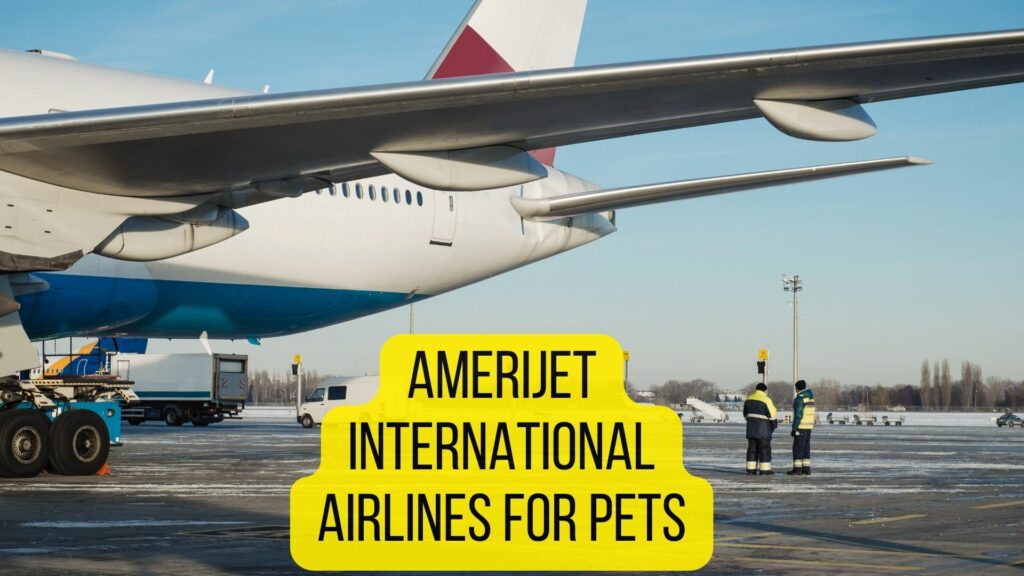
Amerijet International Airlines (On Cargo)
Amerijet International Airlines is an American cargo that flies to 46 destinations throughout Central and South America, the Caribbean, and Mexico. It handles animal shipment and has a very professional and warm staff on board. It ships snub dogs, though have a seasonal restriction on English Bulldogs due to excessive heat.
Note: It mainly flies from the U.S. to the Caribbean and South America.
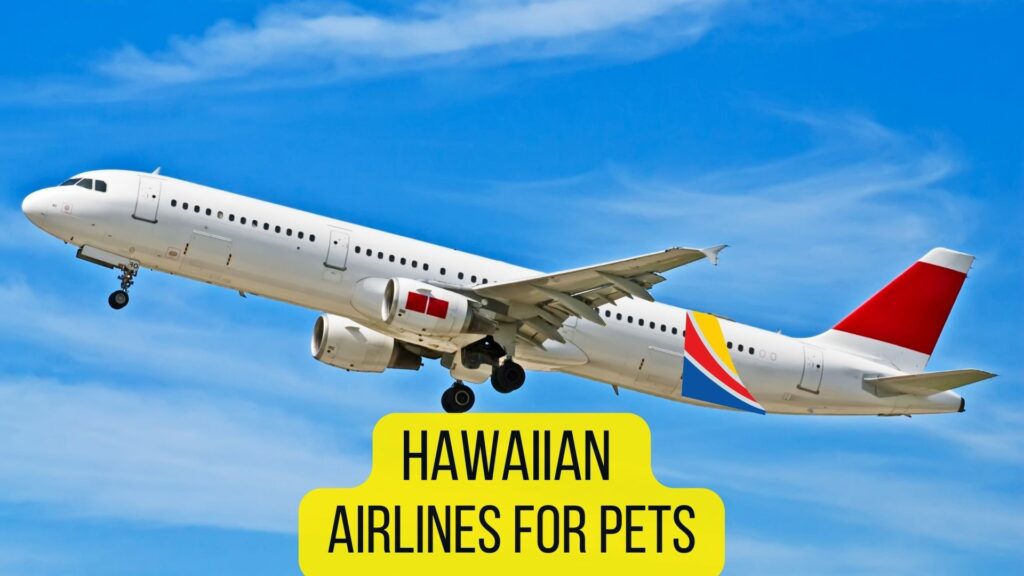
Hawaiian Airlines (On Cargo)
Hawaiian Airlines is the tenth-largest commercial airline in the United States. It operates for both passenger and cargo-only flights. It deals in live animal shipments, including snub dogs and cats as well. For shipping snub nose/brachycephalic breeds with Hawaiian Airlines, the pet owner must deliver pets in a hard-sided crate/ carriage. The crate should be one size bigger than what would generally will ideal for the pet. This is essential for letting the snub nose pet move freely and not feel suffocated.
For shipping your snub pet with Hawaiian Airlines, book well in advance, at least 2 to 4 days before. You will require to submit a Health Certificate issued by a licensed veterinarian (of no more than 10 days older). The shipping pet must be 8 weeks or older and weaned off the mother.
Pacific Air Cargo (On Cargo)
Pacific Air Cargo is another American airline service that deals in shipping live pets. It also ships snub dogs with special care inside a climatically controlled deck. However, it provides service only between Honolulu and Los Angeles.
Allegiant (In Cabin)
Allegiant Air allows dogs and cats to travel across all its destination. With no such restriction, it will enable flying all domestic dogs and cats, including the snub-nosed ones as well. However, Allegiant allows only fly pets in-cabin, and if your snub dog can fit in a crate, you can take him/ her along. Though if the dog is big enough, you might not be able to take it along on the flight.
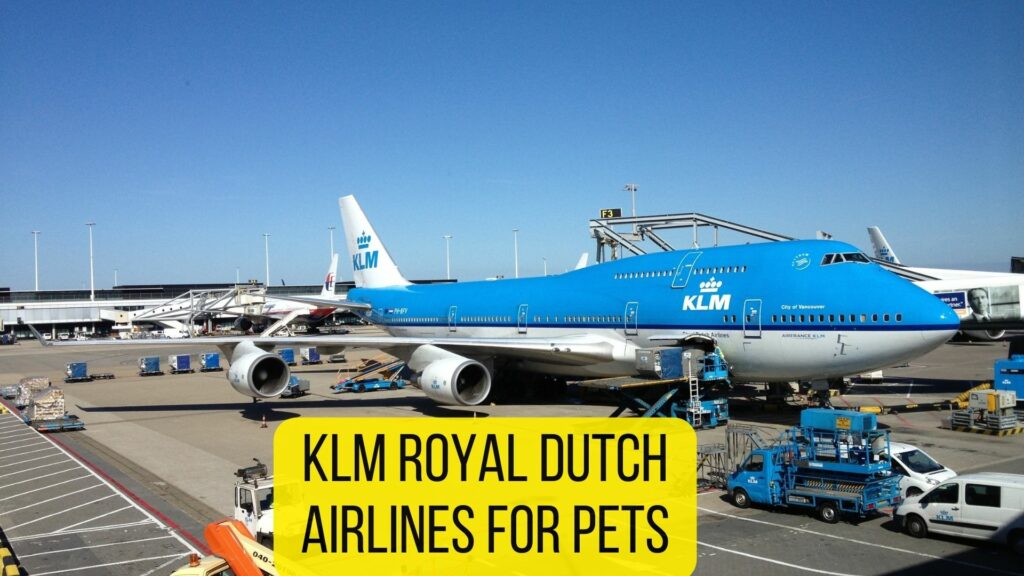
KLM Royal Dutch Airlines (On Cargo)
The KLM Royal Dutch Airlines allow snub nose dogs to travel in their cargo . However, it has restrictions on certain breeds, including English Bulldogs, Pugs, French Bulldogs, and Boston Terriers. Passengers can bring one cat or dog in a crate not bigger than 46 x 28 x 24. The crate and dog together should not weigh more than 17.6 lbs. Bringing pets on international flights and Business Class doesn’t regulate with these airlines.
KLM Royal Dutch Airlines doesn’t allow pets in case your transfer time is over 3 hours. Or, if your flight is operated in Boeing 787-9 or 787-10 aircraft, bringing a pet along isn’t allowed. The cost of travel may range between EUR 75 to EUR 400.
KLM restrict these snub dog breeds: Mastiff (all breeds), Pekingese, Petit Brabancon (Small Brabant), Pug (all breeds), Shar-Pei, Affenpinscher, Boston Terrier, Boxer (all breeds), Shih Tzu, Brussels Griffon, Bulldog (all breeds), Cane Corso, Chow Chow, Great Dane, Lhasa Apso, Spaniel (Tibetan, Japanese, English, and King Charles breeds), and Staffordshire Bull Terrier.
KLM restricts these snub cats breeds: Himalayan, Burmese, Exotic Shorthair, and Persian cats.
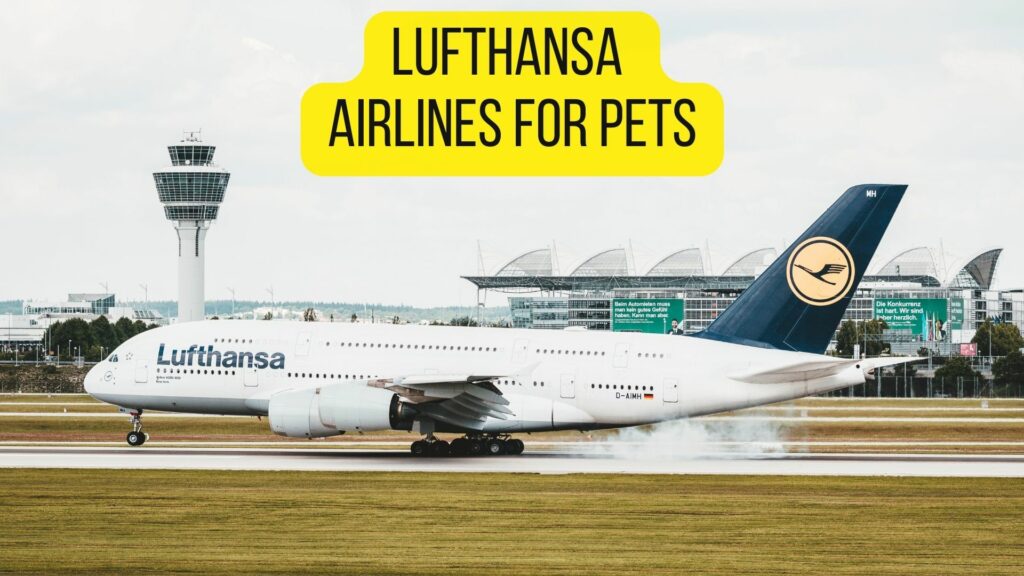
Lufthansa (On Cargo)
Lufthansa Airlines early used to allow snub dogs and cats in-cabin . However, as of 1st January 2021, Lufthansa has imposed restrictions on bringing snub breed pets along with fighting and dangerous dogs. However, it still operates Lufthansa Cargo for transporting snub dogs and cats as air freight.
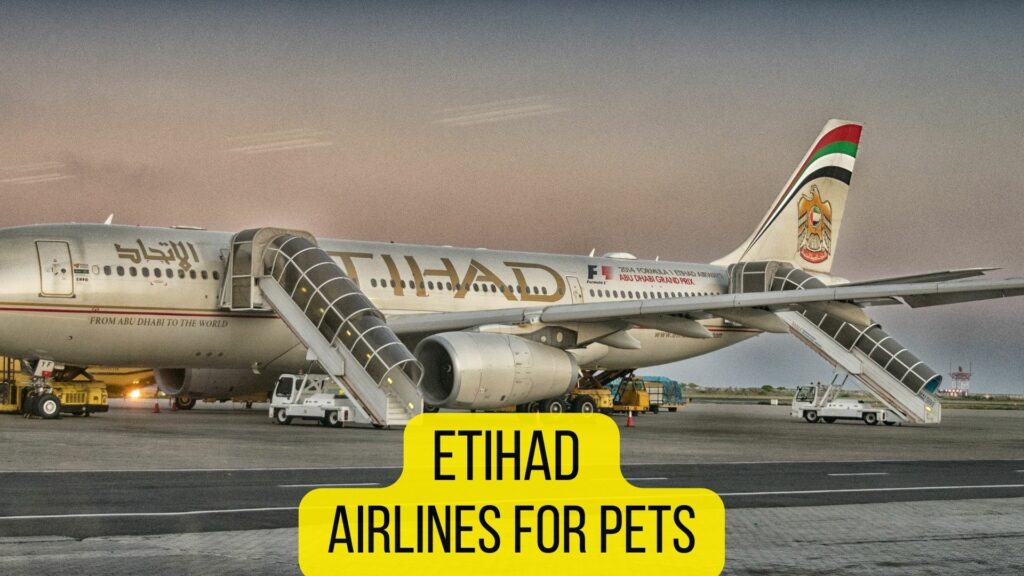
Etihad Airways (On Cargo)
Etihad Airways allow snub cats on board except for Burmese, Himalayan, Persian breeds. Both pet and its crate must weigh no more than 17.6 lbs. The crate size differs from 40 x 40 x 22 to 50 x 43 x 50 depending upon Economy, First, or Business class and the number of seats you book. A flight under 6 hours will cost $150 whereas over 6 hours it will cost $250.
Copa Airlines (In Cabin and On Cargo)
Copa Airlines allows flying snub dogs and cats in the cabin and cargo. It allows pet transportation between Monday through Friday. The cost of the same range between $25 to $125 depending upon domestic, international, and other circumstances.
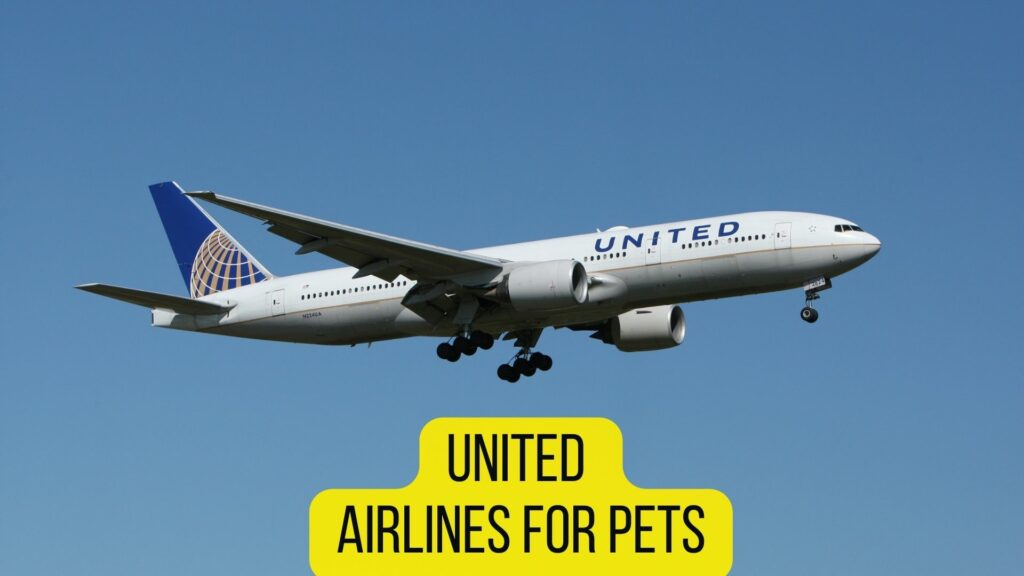
United Airlines (In Cabin and On Cargo)
United Airlines allows flying snub dogs and cats in the cabin and cargo. For domestic travel, the pet must be 2 weeks old, whereas for international travel, at least 4 weeks old. The cost for travel is $125 each way. However, it has a restriction on breeds, including King Charles Spaniel, French, and Standard bulldogs, and Boxers.

Alaska Airlines (In Cabin)
Alaska Airlines allow snub nose dogs and cats to travel inside the cabin along with their owners. The pet must be fully weaned, at least 8 weeks old, and small enough to fit inside a crate. However, Alaska doesn’t allow snub pets inside the cargo.
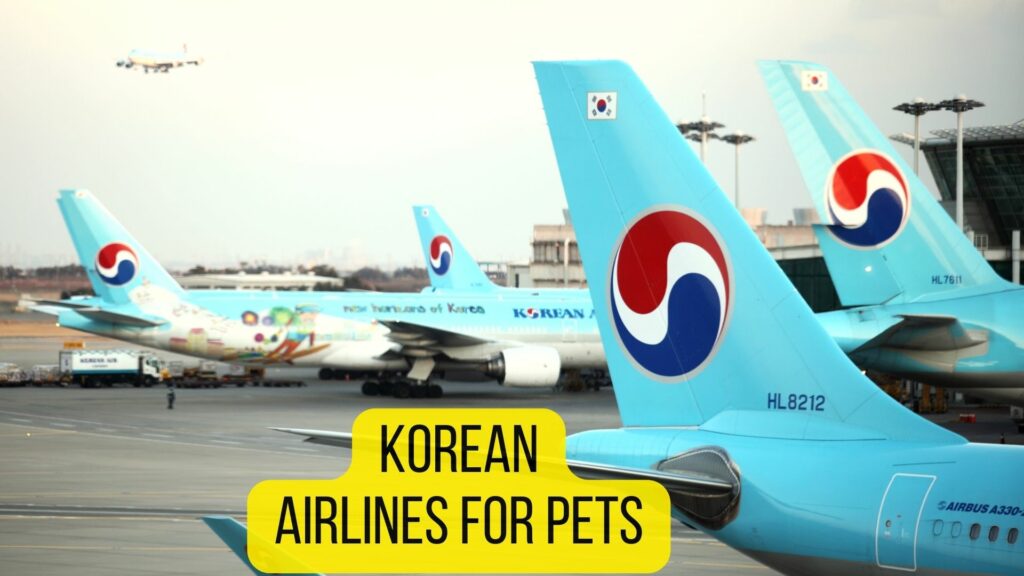
Korean Air (In Cabin)
Korean Air allows snub nose dogs and cats to travel inside the cabin. The total weight of the dog and crate should exceed no more than 15.4 lbs. And as checked baggage, the weight of pet and crate can limit up to 99.2 lbs. Korean Air, though doesn’t allow snub nose dogs and cats in cargo.
NOTE: As of 2021, Korean Air has banned certain snub nose dogs and cat breeds to fly in cabins. Please check their official website for more details.
Aero Mexico (In Cabin and On Cargo)
Aero Mexico allows flying snub dogs and cats in the cabin and cargo. For in-cabin travel, the pet and crate should weigh no more than 20 lbs. Whereas for cargo, the weight can limit up to 99 lbs. Also, flying snub dogs and cats is only possible on flights that are up to 6 hours (or less) longer.
La Compagnie (In Cabin)
La Compagnie is a French Airlines that allow all kind of dogs, including snub dogs, in flight. Though if the pet and crate weigh more than 110lbs, it will be shifted to cargo.
Which airline doesn’t allow snub-nosed dogs? What If My Airline Won’t Take My Short-Nosed Dogs?
A lot of Major Airlines doesn’t allow snub nose dogs. The number may also include those airlines which earlier used to welcome snub nose pets on board.
Airlines that don’t allow snub nose dogs in Flight 2022
Can brachycephalic dogs fly in a cabin? Why are brachycephalic dogs not allowed on planes?
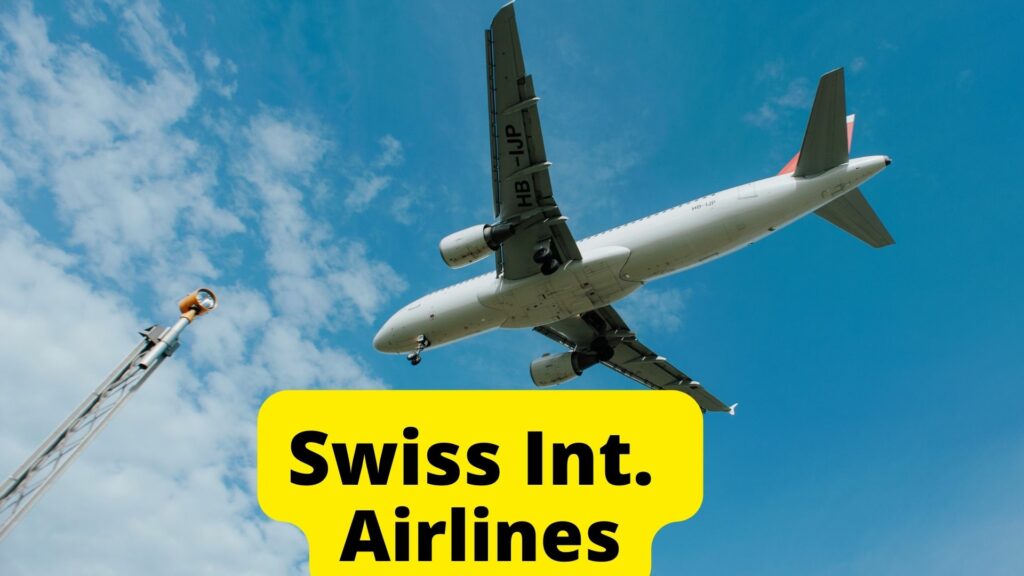
Swiss Airlines: Previously, it used to welcome snub nose dogs on board. Though since 2022, they do not allow snub nose dogs on their flights.
Emirates Airlines: Previously, it flew snub nose dogs other than bulldogs between October and April. Though currently, since 2020, it does not allow any snub nose dog or cat breed in-cabin or on-cargo.
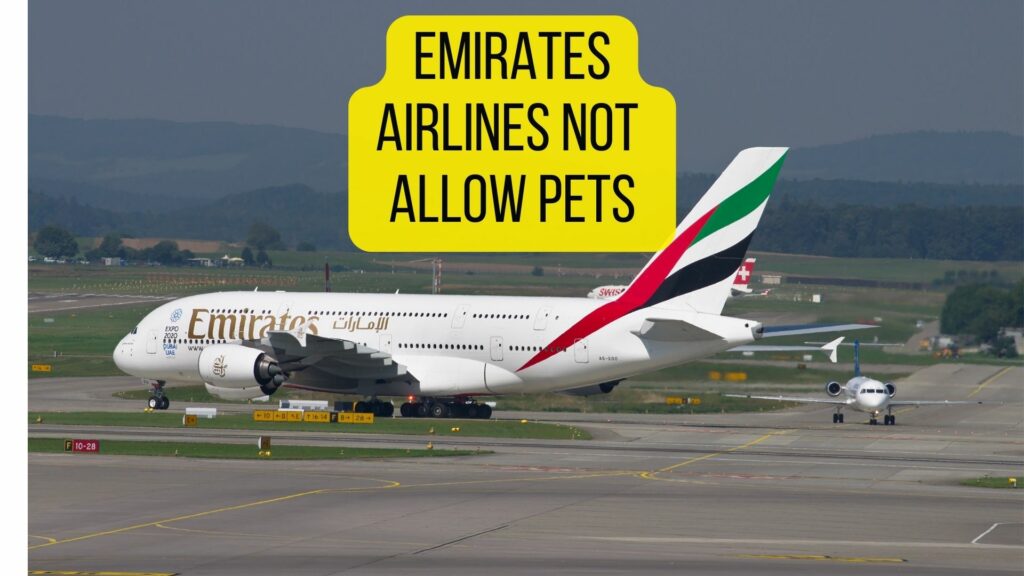
If airlines don’t allow your snub nose pet on the flight, you can still carry them around with road-based transport methods. Or, even rail transportation is considered safe for taking snub pets around.
Does Delta allow snub-nosed dogs in the cabin?
Delta is one of the most popular pet-carrying airlines. However, it has stopped flying snub nose dogs and cats since a long time ago. Neither do they take them as checked baggage nor as cargo. Delta doesn’t even provide any military exceptions for restricted pet breeds.
How to prepare a Snub nose dog for a flight?
Flying with a snub dog can land you with major health concerns. With changes in weather, air pressure, air quality, etc., these dogs can show a significant drop in their health. However, you can reduce these risks with the right planning. Here are a few expert tips for the same.
- Snub nose dogs who are overweight can find it high time flying. It is because their breathing restricts more with increased weight. Thus, if you have a flight planned in the near future, work with your dog’s weight. A professional Vet will help you reach your snub’s ideal weight before the flight.
- Plan your travel when the weather considerations and temperature is right. Avoid flying when it is too hot or too cold. During summers, avoid peak day hours. Whereas during winters, avoid morning and night hours. Even when aircraft have controlled temperature, make sure you plan well ahead.
- Invest in a larger crate with all 4 to 5 side ventilation options. Make the pet used to with the crate at least 15 days before your flight.
- Line your pet’s crate with a very light microfibre blanket. Restrict anything close to them that is harmful to a T.B. or Asthma patient.
- Allow your snub dog to drink more and more water before the flight. This will help him to stay cool and calm. You can also line his crate with frozen patches.
- Consult your vet 1 month before the travel. Ensure everything from your dog’s weight, health, and organs are doing fine.
List of Snub nose dogs
- Boston Terrier
- English Bulldog
- French Bulldog
- Bullmastiff
- Bull Terrier
- Chinese Pug
- Dutch Bulldog
- Dogue de Bordeaux
- Japanese Chin
- King Charles spaniel
- Tibetan Spaniel
- Brussels Griffon
- Small Brabant Griffon
- Mastiff or Old English Mastiff
- Neapolitan Mastiff
- Staffordshire Bull Terrier
List of Snub nose cats
This was all for snub nose dogs, whether they can fly, and the airlines which allow them onboard. However, even after all this information, if you are still facing a hard time then hire a pet relocation company.
Those experts will make proper safety arrangements and fly your snub pet from one place to another. It though might cost a little heavy on your pocket but considering your pet’s health; it is worth it.
Related Posts
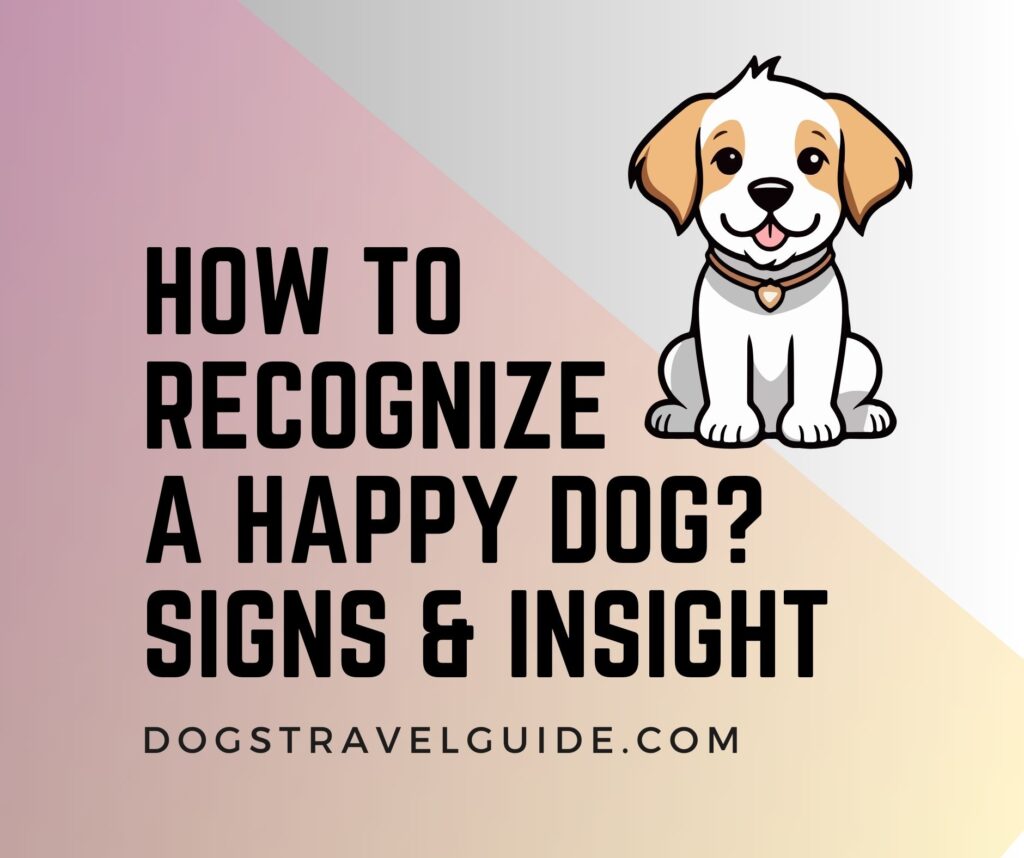
How to Recognize a Happy Dog? 15 Signs and Insights

Modern Dog Crates: How to Choose Them?
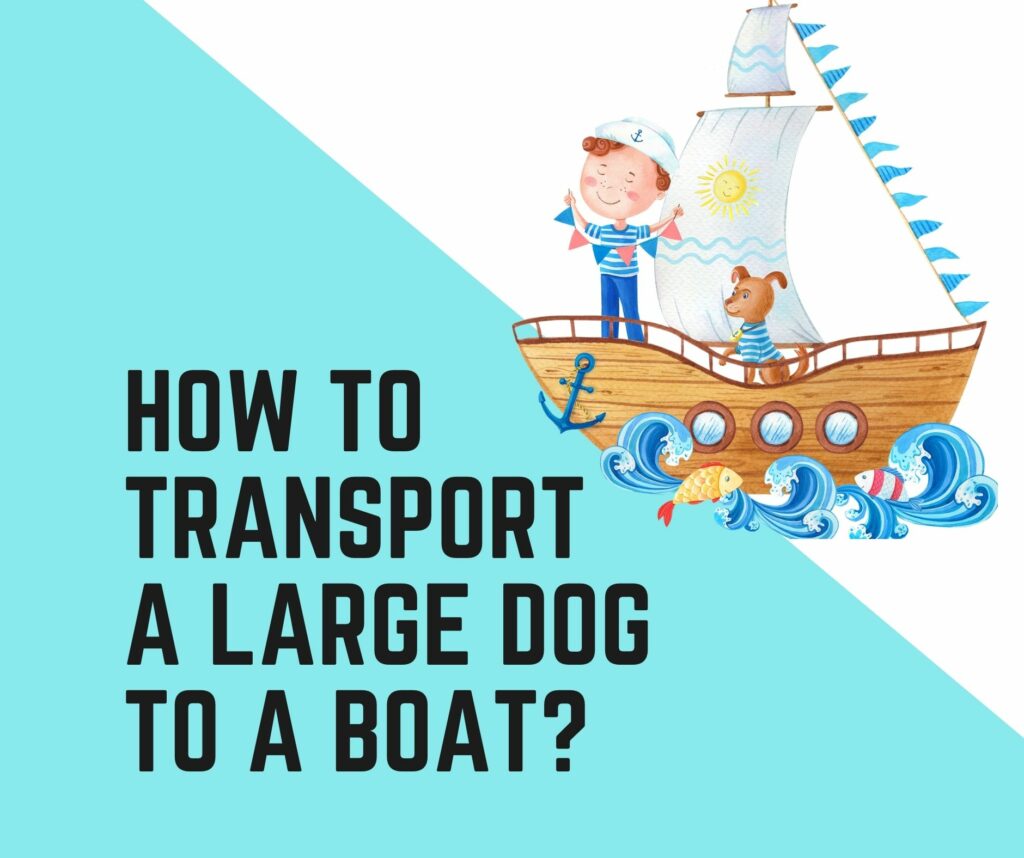
How Do You Transport A Large Dog To A Boat? 10 Tips

Flying A Snub-nosed Dog
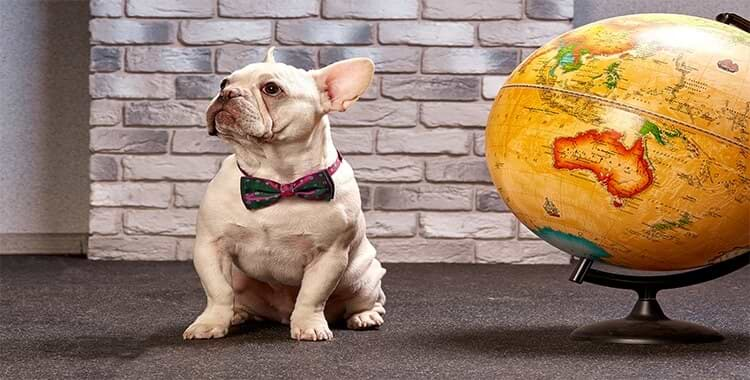
Flying a snub-nosed dog internationally isn’t a straightforward process. Dogs that are snub-nosed (brachycephalic breeds) are often at a higher risk during air travel than other “regular” breeds. If you plan to relocate with a snub-nosed dog (such as a Pug, French Bulldog or Boston Terrier), you should know that the move won’t be easy.
What Are Snub-nosed Dogs?

Snub-nosed dogs (also called brachycephalic breeds) are dogs that have a short nose. These dogs are more likely to suffer respiratory problems under normal circumstances – so just imagine what could happen during air travel.
The reason why snub-nosed dogs have respiratory problems is because they pack the same nose structure as long snout dogs. Dogs with small snouts have the same structure and anatomy as long snout dogs but only in a more cramped structure.
Here is a list of some of the most popular snub-nosed dogs around the world:
- French Bulldog
- Boston Terrier
- English Toy Spaniel
- English Bulldog
- Japanese Chin
- King Charles Spaniel
Please note that there are many more breeds that are snub-nosed.
Many Airlines Have Stopped Flying Snub-nosed Dogs
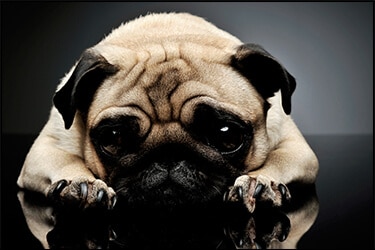
Many airlines around the world banned snub-nosed dogs from flying in the hold of their planes due to the fact that there were many unfortunate incidents with such breeds in the last couple of years.
There are still a couple of airlines that didn’t ban yet snub-nosed dogs. Instead, these airlines have placed tight restrictions for traveling with them. These restrictions are usually weather dependent (they won’t accept snub-nosed dogs during the summer).
Below is a list of some of the world’s leading airlines that won’t fly or restrict snub-nosed breeds:
- Swiss – As of 2020, snub-nosed dogs can’t fly in the hold of their planes.
- United – since mid-2018, United have stopped accepting snub-nosed breeds in their holds.
- Delta – we don’t remember exactly when this happened, but they stopped flying snub-nosed breeds in their holds a long time ago.
- Lufthansa – From 2020, flying a snub-nosed dog can only be done as manifest cargo or in-cabin.
- KLM – they don’t fly Pugs, English/French Bulldog and Boston Terriers in the hold of their planes.
Even though there are many airlines that won’t fly snub-nosed dogs in their holds, it is important to note that there are plenty of airlines that will accept snub-nose breeds in cabin, as long as they meet the airline’s pet in-cabin policy. For such breeds, flying in-cabin is most likely the safest way to travel.
The Risks Of Flying A Snub-nosed Dog
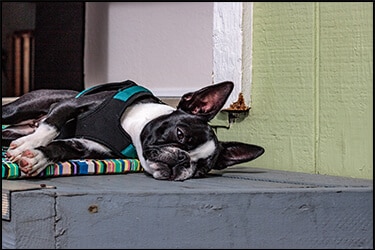
Snub-nosed dog breeds hold the highest recorded death ratio for pets that have traveled by air. Nevertheless, it is important to remember that deaths while flying are not common and that millions of pets fly safely around the world each year.
Snub-nosed dogs have difficulty flying because they are more sensitive to changes in air quality and to the temperature in the hold of the plane. Even though the air in the pressurized cargo hold (where pets are transported) is the same as in the passenger cabin, the air circulation might not be ideal for a snub-nosed dog.
Brachycephalic Dogs Require A Bigger Travel Crate
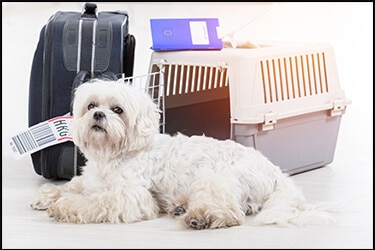
In order to minimize the risks involved in flying brachycephalic dogs, airlines usually require a flight crate that is at least 10 cm larger than the dog.
Airlines that still accept brachycephalic breeds require pet owners to have an airline approved flight crate that is at least one size larger than the needed/expected size. Purchasing a larger pet travel crate will help minimize the risks!
5 Tips For Flying A Snub-Nosed Dog

Even though the flight experience varies from dog to dog, the tips you will read here are important for flying pets in general, and are significantly more important when flying “problematic” breeds.
Tip #1 – Choosing the appropriate flight crate
As mentioned in this article, snub-nosed dogs are required to fly with a larger flight crate. We understand that the relocation process isn’t cheap, but please, don’t save your money on this.
Tip #2 – Get your dog accommodated to the flight crate
After purchasing the appropriate pet travel crate, make sure your dog gets used to it before your flight.
Making your dog comfortable inside the flight crate will eventually make things less stressful for him/her.
Tip #3 – Consult with your vet
If your dog is treated regularly by a veterinarian, we advise you consult with him/her before traveling.
Tip #4 – Hire A Pet Relocation Company
Flying a snub-nosed dog is complicated and, in some ways, dangerous. Hiring an expert to assist is surely worth the money. Don’t you agree?
Tip #5 – Don’t fly when the weather is hot!
If possible, try not to fly in the summer. If you must fly during the summer season, we recommend you search for flights that leave early morning or late at night (when it’s not too hot outside).
In any case, before the flight, be sure to offer your dog plenty of water. This will prevent your dog from dehydrating.
Frequently Asked Questions About Flying Brachycephalic Dogs

Question #1 : My dog is mixed with a snub-nosed breed. Will it be hard flying him?
Unfortunately, yes, most airlines won’t accept your dog as they will consider it as a snub-nosed dog.
Question #2 : Can I purchase a crate that is 2-3 sizes up?
We don’t recommend that. You are required to purchase a crate that is one size larger. Purchasing a crate that is 2-3 sizes up could have a negative effect.
Question #3 : How can I take my dog with me in-cabin?
We recommend you check the airline’s pet in-cabin requirements. If your pet meets the requirements, you could take your dog with you in cabin.
Please also remember to check out the destination country’s regulations. There are some countries (like the UK and Australia) that will only allow you to bring a pet into their territory as manifest cargo.
Question #4 : Why do airlines require snub-nosed dogs to fly with a larger crate?
This is required as a bigger travel crate will improve air circulation and therefore, cancel out the “disadvantage” of having a short snout.
Question #5 : Taking a snub-nosed dog seems very dangerous. Can you guarantee a safe trip?
We have a 100% success rate, but, unfortunately, we can’t guarantee a safe trip. There are risks involved that aren’t in our hands (or anyone else’s).
If everything is done properly, we will manage to minimize the risks involved. By minimizing the risks, we can guarantee the safest trip possible.
Flying Snub-Nosed Dogs Is Our Expertise!

Flying some of the world’s most popular snub-nosed dogs can take a great deal of time and preparation. Even though there will always be risks involved, if you plan carefully, you could make flying with a snub-nosed dog as safe and as stress-free as possible.
If you have a snub-nosed dog, we highly recommend you contact a pet transport company to assist you with the process.
In the past couple of years, we had the pleasure to assist hundreds of families relocate with their brachycephalic dogs. It wasn’t easy, but we enjoyed doing so.
If you need help, feel free to contact us!

We would love to hear from you!
Origin Origin Afghanistan Albania Algeria Andorra Angola Antigua and Barbuda Argentina Armenia Australia Austria Azerbaijan Bahamas Bahrain Bangladesh Barbados Belarus Belgium Belize Benin Bhutan Bolivia Bosnia and Herzegovina Botswana Brazil Brunei Bulgaria Burkina Faso Burundi Cabo Verde Cambodia Cameroon Canada Central African Republic (CAR) Chad Chile China Colombia Comoros Congo Costa Rica Cote d'Ivoire Croatia Cuba Cyprus Czech Republic Denmark Djibouti Dominica Dominican Republic Ecuador Egypt El Salvador England Equatorial Guinea Eritrea Estonia Ethiopia Fiji Finland France Gabon Gambia Georgia Germany Ghana Greece Grenada Guatemala Guinea Guinea-Bissau Guyana Haiti Honduras Hong Kong Hungary Iceland India Indonesia Ireland Israel Italy Jamaica Japan Jordan Kazakhstan Kenya Kiribati Kosovo Kuwait Kyrgyzstan Laos Latvia Lebanon Lesotho Liberia Libya Liechtenstein Lithuania Luxembourg Macedonia (FYROM) Madagascar Malawi Malaysia Maldives Mali Malta Marshall Islands Mauritania Mauritius Mexico Micronesia Moldova Monaco Mongolia Montenegro Morocco Mozambique Myanmar (Burma) Namibia Nauru Nepal Netherlands New Zealand Nicaragua Niger Nigeria North Korea Northern Ireland Norway Oman Pakistan Palau Panama Papua New Guinea Paraguay Peru Philippines Poland Portugal Qatar Romania Russia Rwanda Saint Kitts and Nevis Saint Lucia Saint Vincent and the Grenadines Samoa San Marino Sao Tome and Principe Saudi Arabia Scotland Senegal Serbia Seychelles Sierra Leone Singapore Slovakia Slovenia Solomon Islands Somalia South Africa South Korea South Sudan Spain Sri Lanka Sudan Suriname Swaziland Sweden Switzerland Syria Taiwan Tajikistan Tanzania Thailand Timor-Leste Togo Tonga Trinidad and Tobago Tunisia Turkey Turkmenistan Tuvalu Uganda Ukraine United Arab Emirates (UAE) United Kingdom (UK) United States of America (USA) Uruguay Uzbekistan Vanuatu Vatican City (Holy See) Venezuela Vietnam Wales Yemen Zambia Zimbabwe
Destination Destination Afghanistan Albania Algeria Andorra Angola Antigua and Barbuda Argentina Armenia Australia Austria Azerbaijan Bahamas Bahrain Bangladesh Barbados Belarus Belgium Belize Benin Bhutan Bolivia Bosnia and Herzegovina Botswana Brazil Brunei Bulgaria Burkina Faso Burundi Cabo Verde Cambodia Cameroon Canada Central African Republic (CAR) Chad Chile China Colombia Comoros Congo Costa Rica Cote d'Ivoire Croatia Cuba Cyprus Czech Republic Denmark Djibouti Dominica Dominican Republic Ecuador Egypt El Salvador England Equatorial Guinea Eritrea Estonia Ethiopia Fiji Finland France Gabon Gambia Georgia Germany Ghana Greece Grenada Guatemala Guinea Guinea-Bissau Guyana Haiti Honduras Hong Kong Hungary Iceland India Indonesia Ireland Israel Italy Jamaica Japan Jordan Kazakhstan Kenya Kiribati Kosovo Kuwait Kyrgyzstan Laos Latvia Lebanon Lesotho Liberia Libya Liechtenstein Lithuania Luxembourg Macedonia (FYROM) Madagascar Malawi Malaysia Maldives Mali Malta Marshall Islands Mauritania Mauritius Mexico Micronesia Moldova Monaco Mongolia Montenegro Morocco Mozambique Myanmar (Burma) Namibia Nauru Nepal Netherlands New Zealand Nicaragua Niger Nigeria North Korea Northern Ireland Norway Oman Pakistan Palau Panama Papua New Guinea Paraguay Peru Philippines Poland Portugal Qatar Romania Russia Rwanda Saint Kitts and Nevis Saint Lucia Saint Vincent and the Grenadines Samoa San Marino Sao Tome and Principe Saudi Arabia Scotland Senegal Serbia Seychelles Sierra Leone Singapore Slovakia Slovenia Solomon Islands Somalia South Africa South Korea South Sudan Spain Sri Lanka Sudan Suriname Swaziland Sweden Switzerland Syria Taiwan Tajikistan Tanzania Thailand Timor-Leste Togo Tonga Trinidad and Tobago Tunisia Turkey Turkmenistan Tuvalu Uganda Ukraine United Arab Emirates (UAE) United Kingdom (UK) United States of America (USA) Uruguay Uzbekistan Vanuatu Vatican City (Holy See) Venezuela Vietnam Wales Yemen Zambia Zimbabwe
How's you find us How Did You Find Us? Google Facebook Referral Travel Agent Veterinary Yellow Pages Airline Company IPATA Twitter Pet Shop Other
We would like to warn our clients about pet scams. If someone has reached out to you claiming to be from Airpets International or claiming to have partnered with Airpets International in regards to selling puppies, it is a scam. Airpets International does NOT sell animals. LEARN MORE
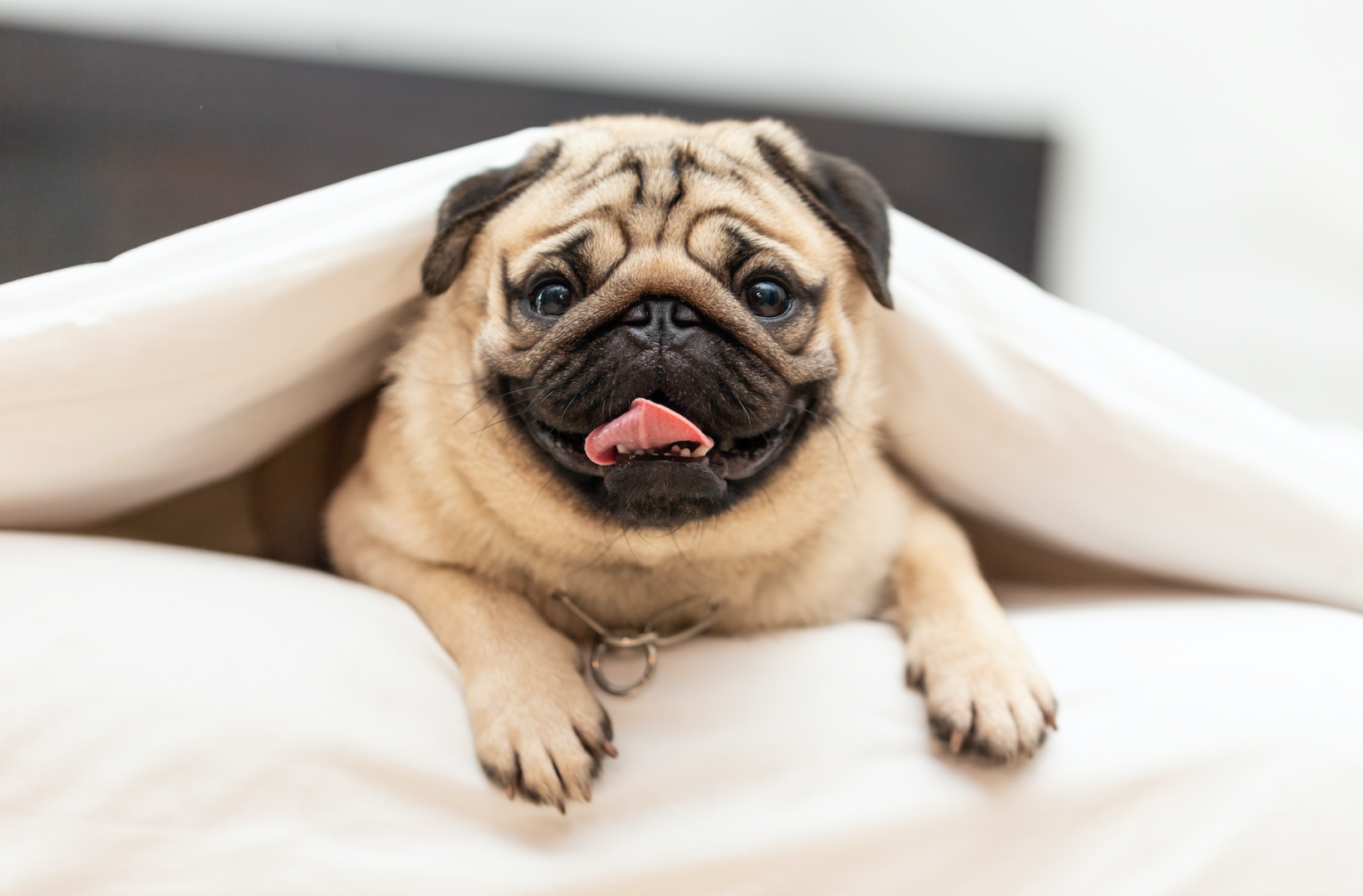
ABOUT US | SERVICES | CONTACT US | REQUEST ESTIMATE | 1 (866) 738-7447
Copyright All Rights Reserved © 2023 Airpets International
Stay in Touch
Sign up for our newsletter and get pawsome news, blogs, and updates delivered to your inbox every month.
WHERE IS YOUR PET TRAVELING TO?
See some of our more popular locations below!
Netherlands

Flying With Snub-Nosed Dogs: A Comprehensive Guide for Safe Pet Air Travel PetRelocation
How to transport snub-nosed breeds safely.

Snub-nosed dogs, also known as brachycephalic breeds, are adored for their cute, squished faces. However, those endearing features also present unique challenges when it comes to air travel. Breeds such as Pugs, Boston Terriers, and English Bulldogs are more prone to breathing difficulties and overheating during travel, requiring special attention to ensure their safety and comfort.
As a pet owner, it's important to understand the precautions necessary for flying with snub-nosed pets, as well as the airline restrictions and temperature embargoes that may affect your travel plans. Read on for expert tips on how to transport snub-nosed dogs safely and confidently.
Tips for Flying with Snub-Nosed Pets
Every pet move is unique, but the following tips serve as general guidelines to ensure a successful journey for your snub-nosed furry companion:
Choose a Pet Friendly Airline
Select an airline with established pet programs that prioritize pet safety. If your pet cannot fly in the cabin, research carriers that use temperature-controlled vehicles and opt for manifest cargo travel rather than excess baggage. ( Read about why this is our preferred option .)
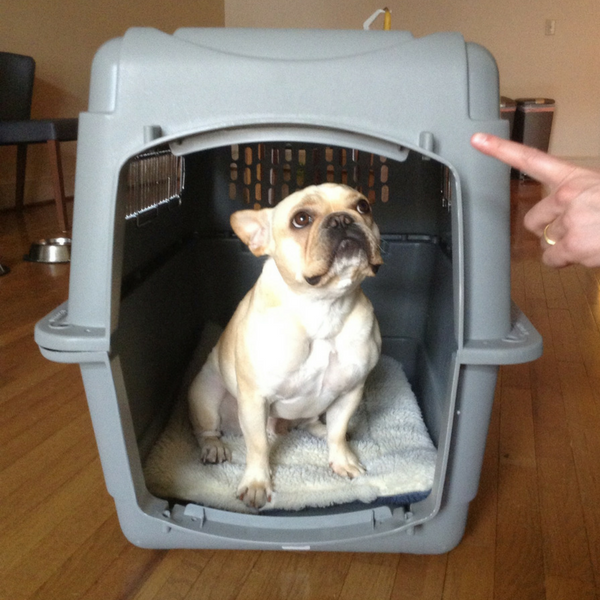
Select a travel crate one size larger than normally needed to allow for extra airflow. This improves ventilation, making a positive difference for pets with potential breathing challenges. Learn how to measure for and choose the right travel crate here .
Devote Time to Crate Training
Familiarize your pet with their travel kennel well before the move. The more comfortable your dog feels in the crate, the less stressful the experience. Explore our tips for crate training here .
Talk to Your Vet
Before you make solid travel plans, discuss your concerns and situation with your trusted veterinarian. You and your vet know best when it comes to your pet’s well-being, so this is the time to discuss whether any medications, tests, or weight loss plans may be needed.
Make Hydration a Priority
Before any pet flies, it’s highly important to help them hydrate as much as possible. During flight, water will be available to pets via the water dishes attached to the crate, but try to offer as much water as you can before pets are checked in and help them rehydrate as quickly as possible after they land.
Air Travel Restrictions for Snub-Nosed Dogs
Airline restrictions and seasonal embargoes can affect travel plans for snub-nosed pets. While pet-friendly airlines strive to accommodate temperature-sensitive breeds, many carriers impose travel restrictions during warmer months (typically mid-May to mid-September). This can make finding flights for snub-nosed dogs challenging during peak summer seasons. Always check with your chosen airline and PetRelocation Specialist to explore options and plan your pet's journey accordingly.
Trust the Experts at PetRelocation for Snub-Nosed Dog Travel
At PetRelocation, we understand the unique needs of snub-nosed breeds and are committed to providing the highest level of care and expertise. Our experienced team is here to assist you in navigating airline options, choosing the right travel crate, and preparing your pet for a safe and comfortable flight. Whether you're relocating domestically or internationally, we'll work closely with you to create a personalized travel plan tailored to your pet's needs.

IMAGES
VIDEO
COMMENTS
Learn about the safety of air travel for short-nosed dogs such as pugs, Boston Terriers, boxers, some mastiffs, Pekingese, Lhasa Apsos, Shih tzus and bulldogs.
This blog post explores the major airlines that allow snub-nosed dogs like Pugs and French Bulldogs to fly in 2021. It discusses airline policies on snub-nosed dogs and which carriers tend to be most accommodating when it comes to transporting short-faced breeds with potential breathing issues.
Snub nose dogs are more sensitive to the temperature in the hold of the plane and changes in air quality which makes airlines ban flights for them. Some airlines do allow snub nose dogs in the cabin as carry-ons.
Dogs that are snub-nosed (brachycephalic breeds) are often at a higher risk during air travel than other “regular” breeds. If you plan to relocate with a snub-nosed dog (such as a Pug, French Bulldog or Boston Terrier), you should know that the move won’t be easy.
Therefore, snub nosed breeds must be taken care of when flying, but this doesn’t mean that they should not undergo air travel. Keep reading to learn about proper tips to follow when flying snub nosed dogs, as well as things to consider when determining health concerns. Be aware of BOAS.
Discover essential tips and precautions for flying with snub-nosed dogs, also known as brachycephalic breeds. Learn how to ensure safe air travel for pets like Pugs, Boston Terriers, and English Bulldogs, who may face breathing challenges.